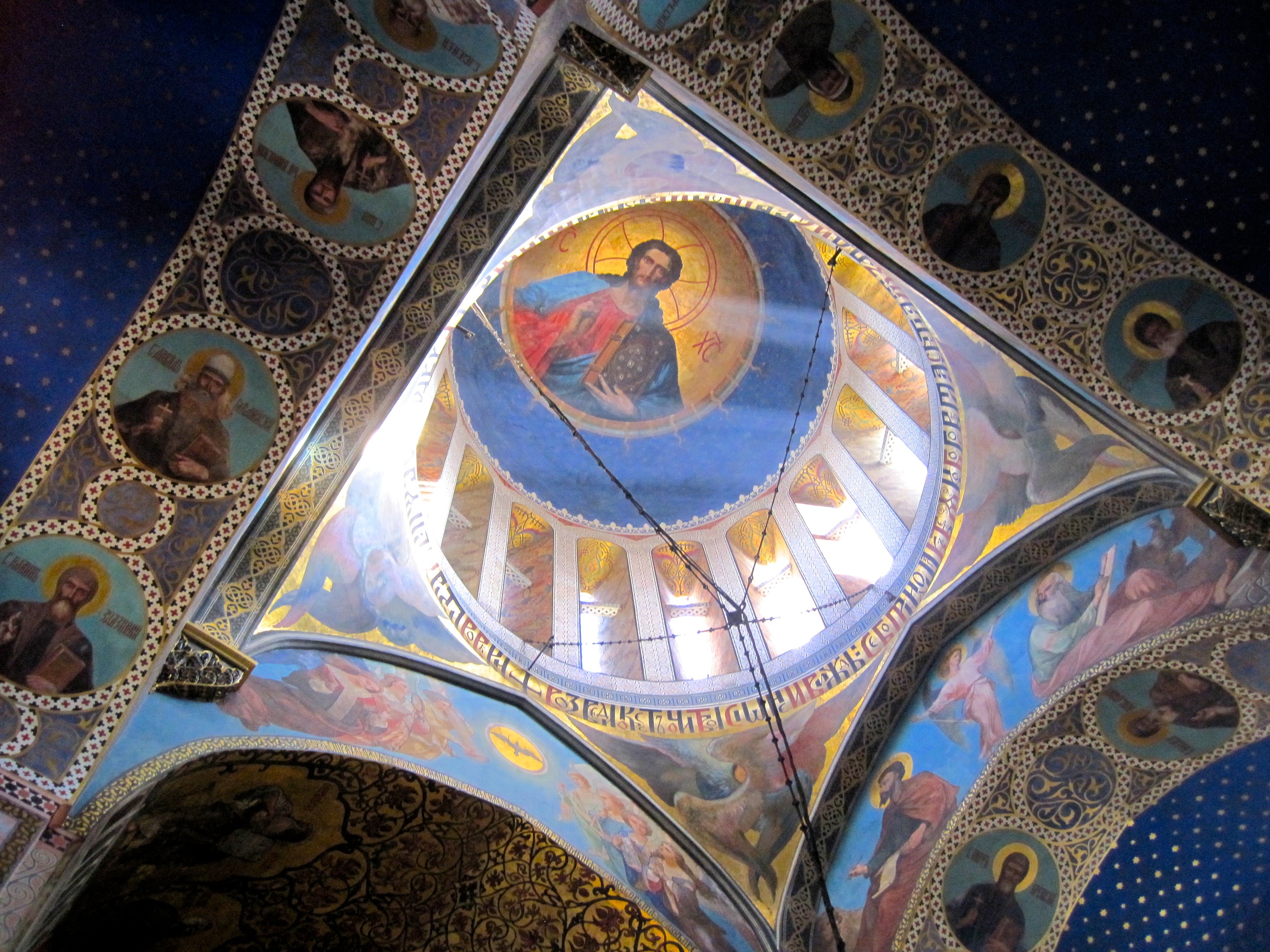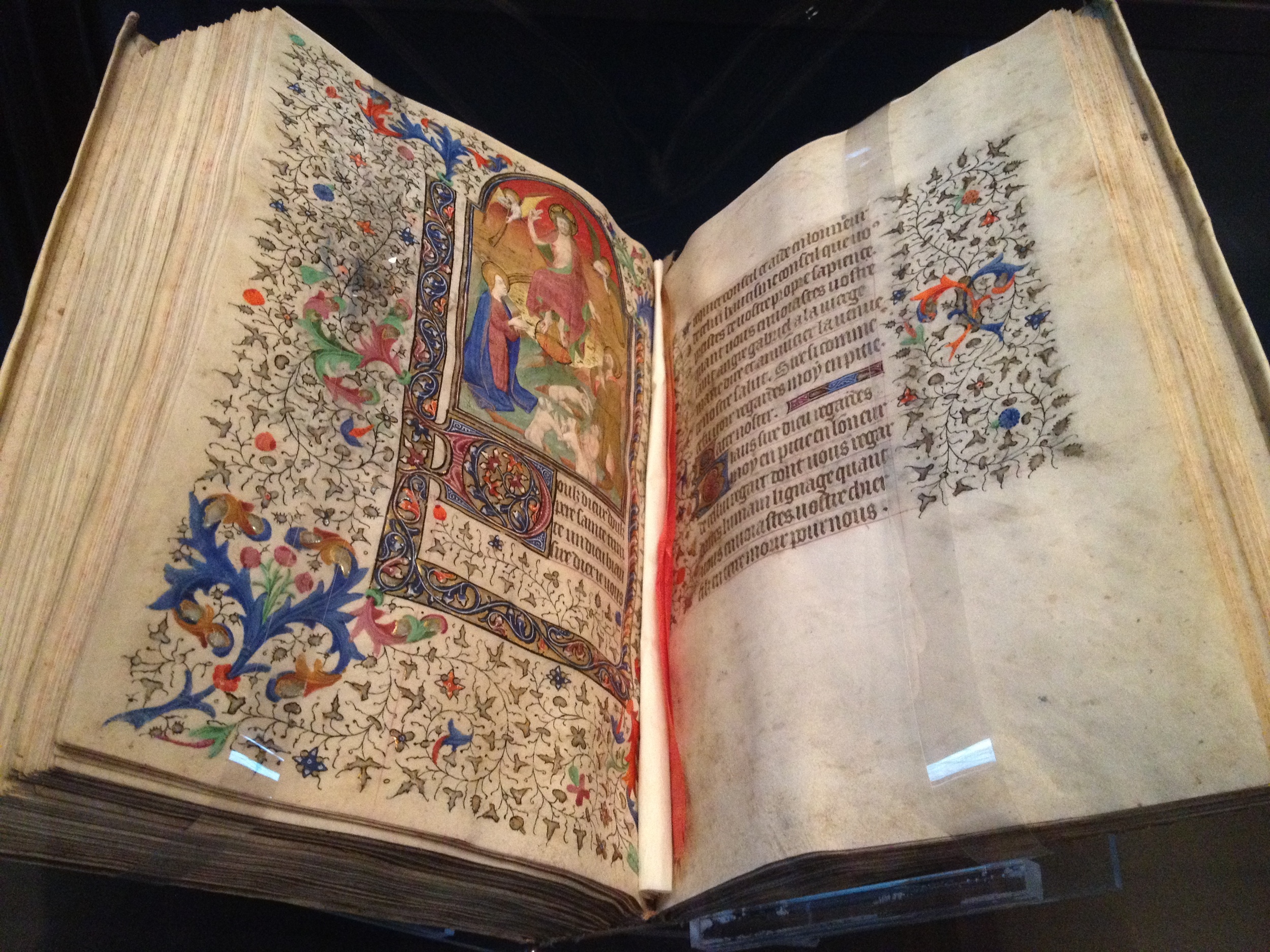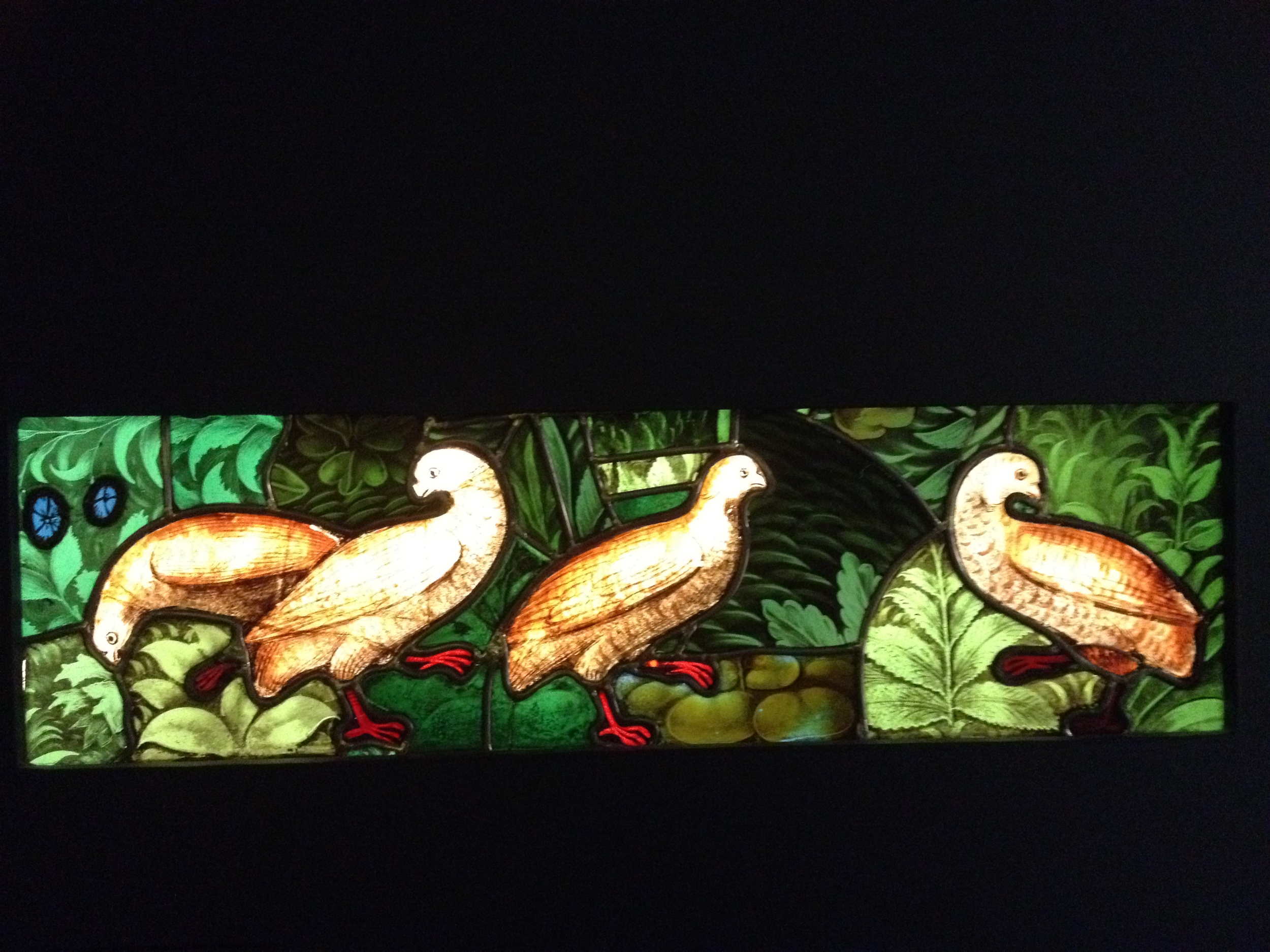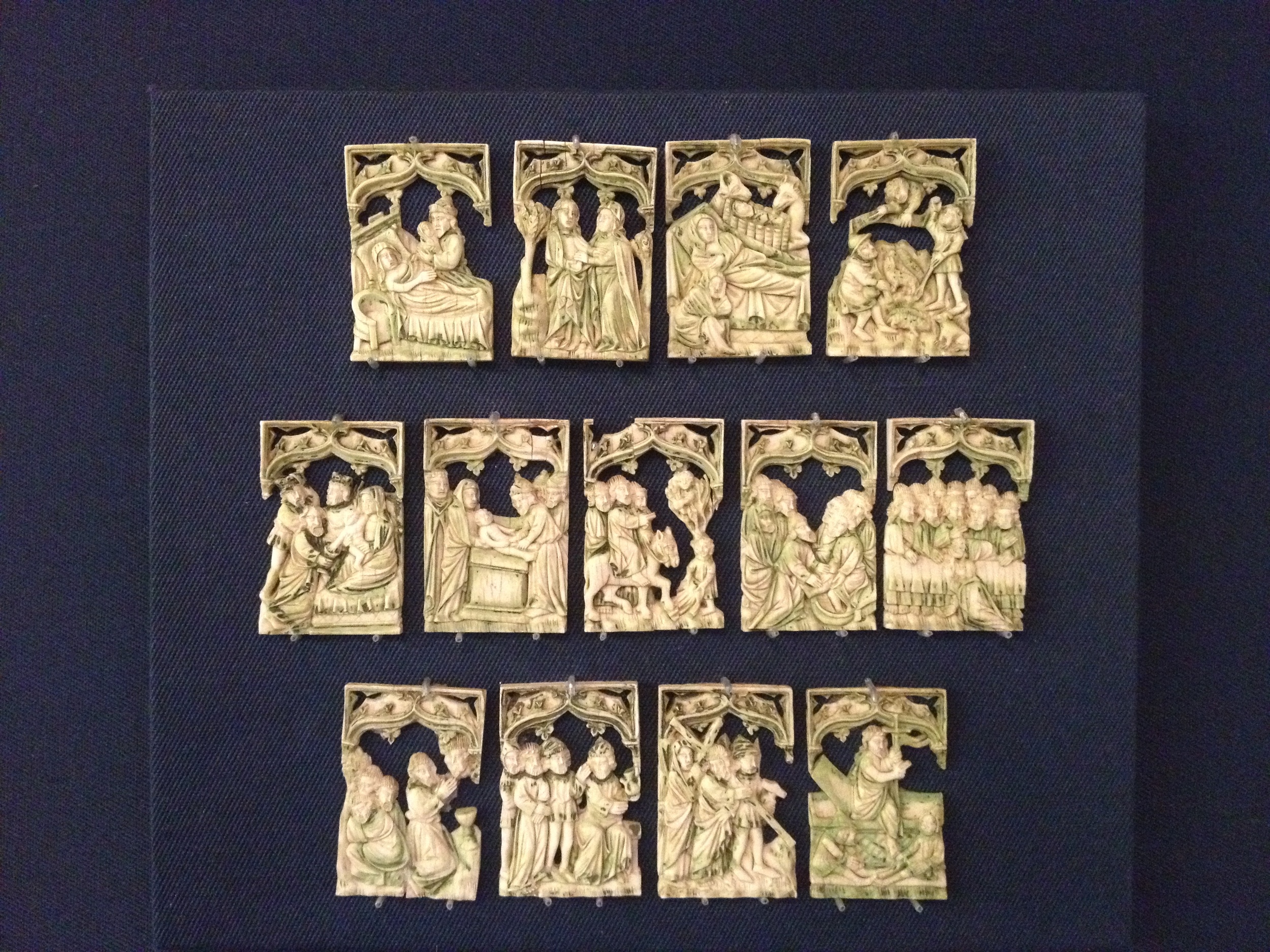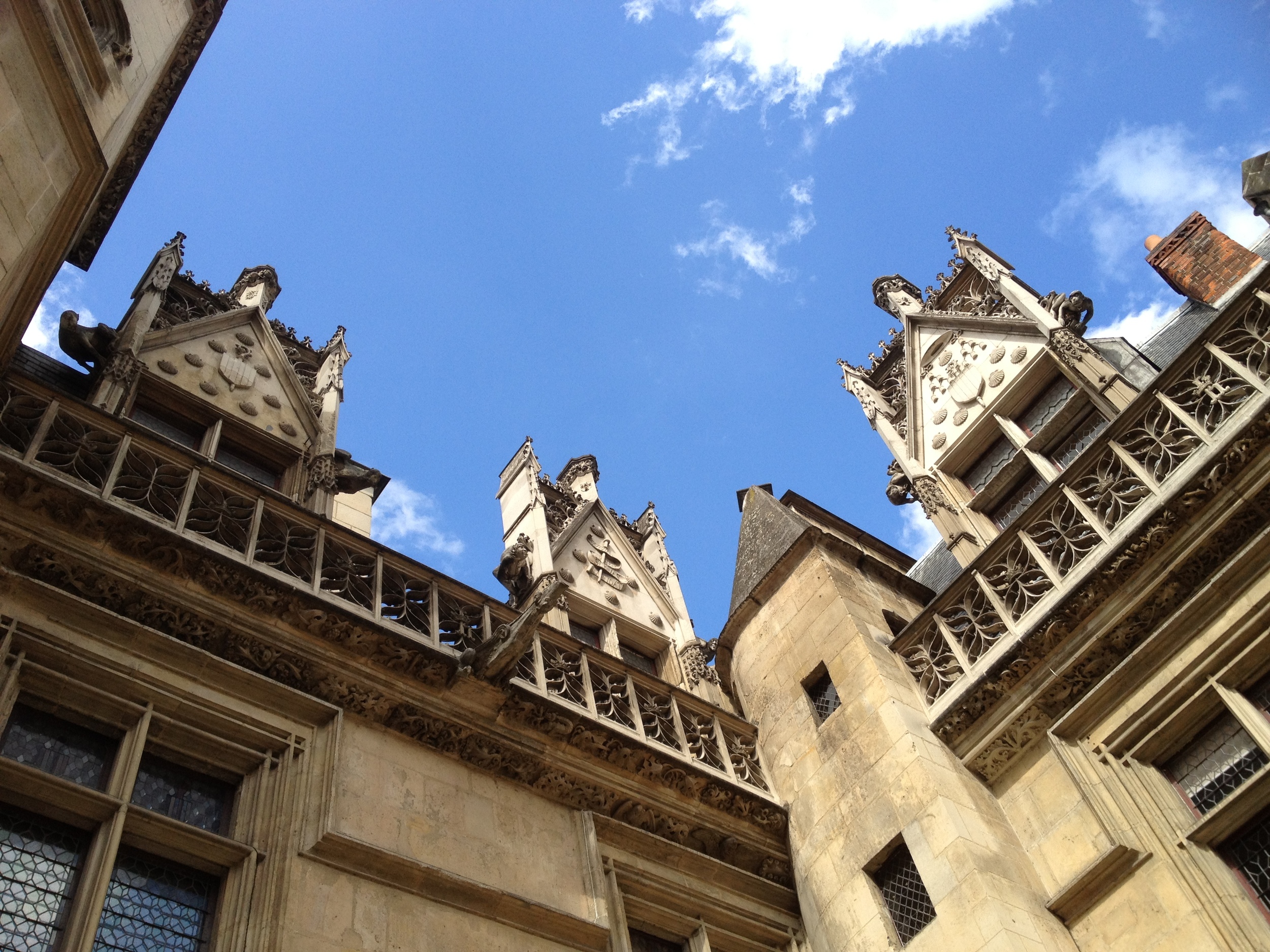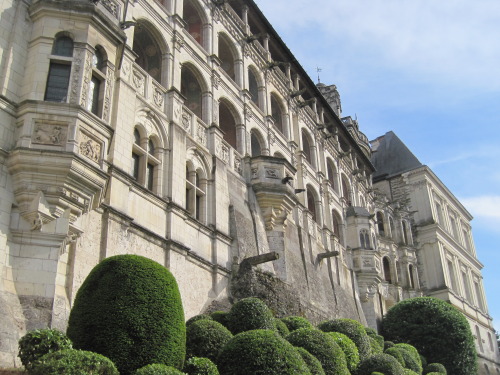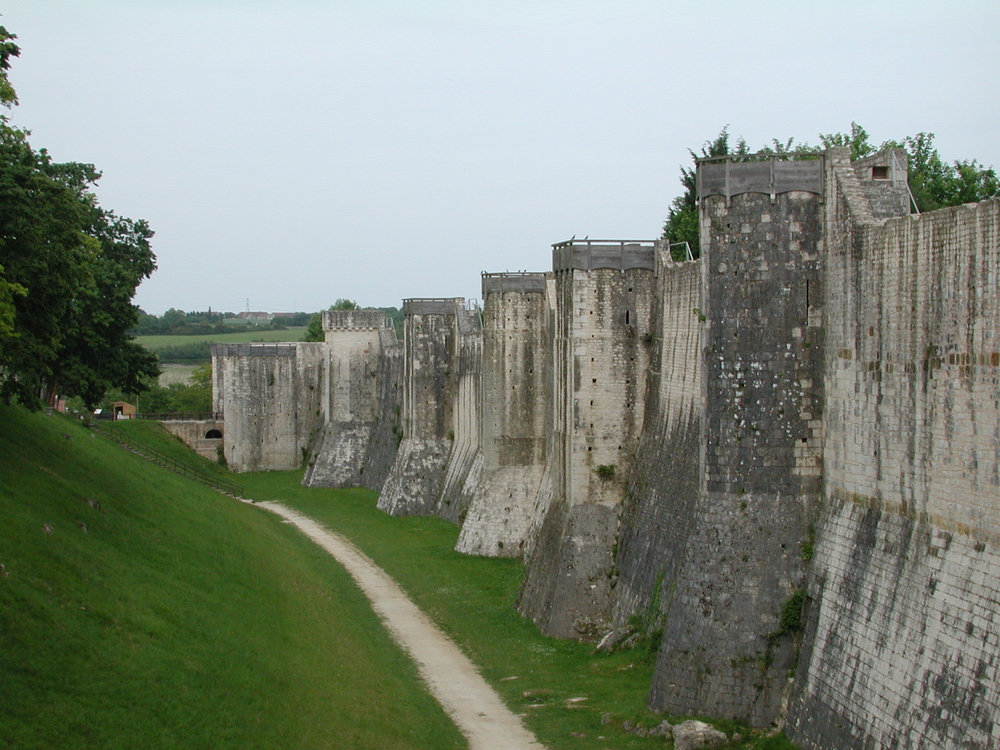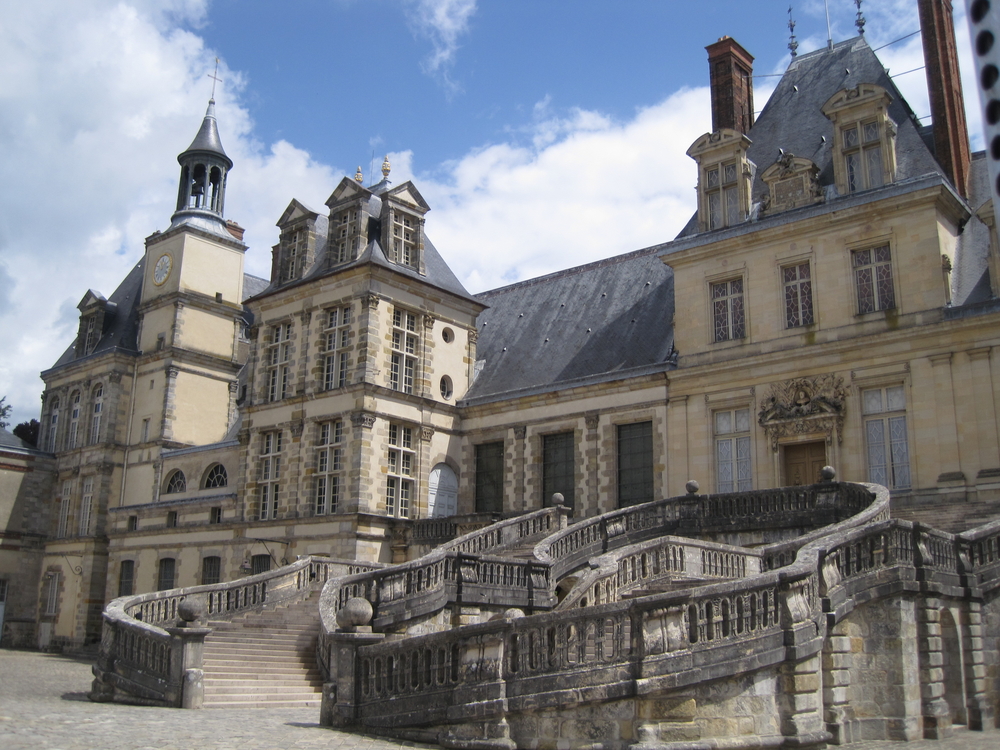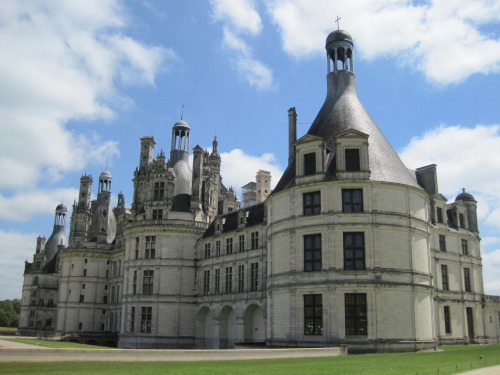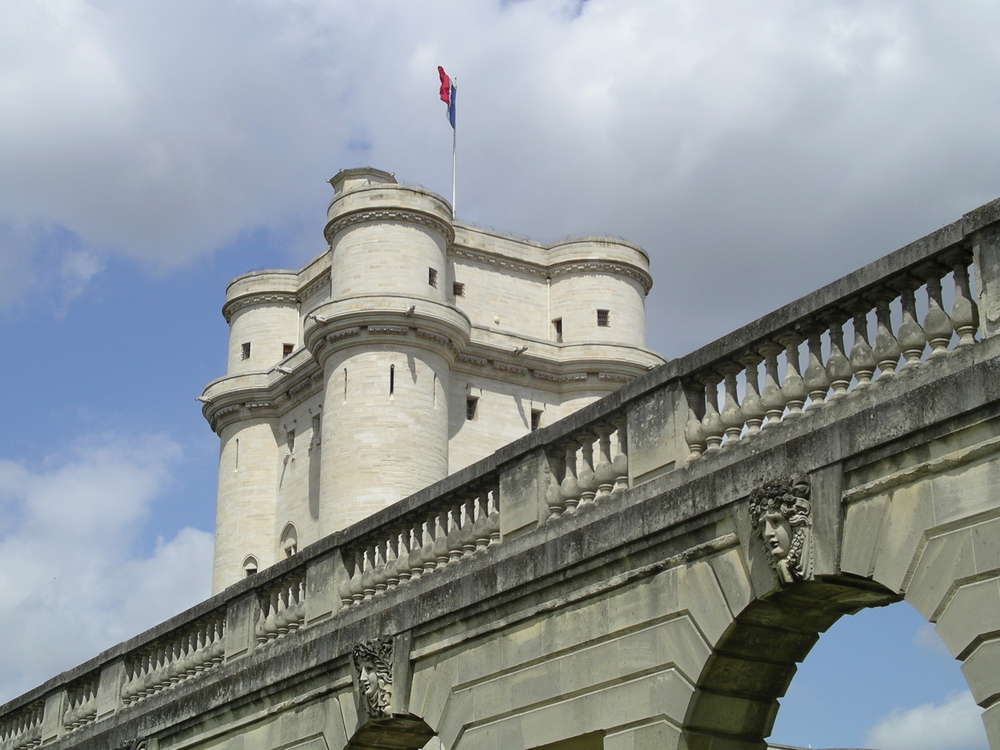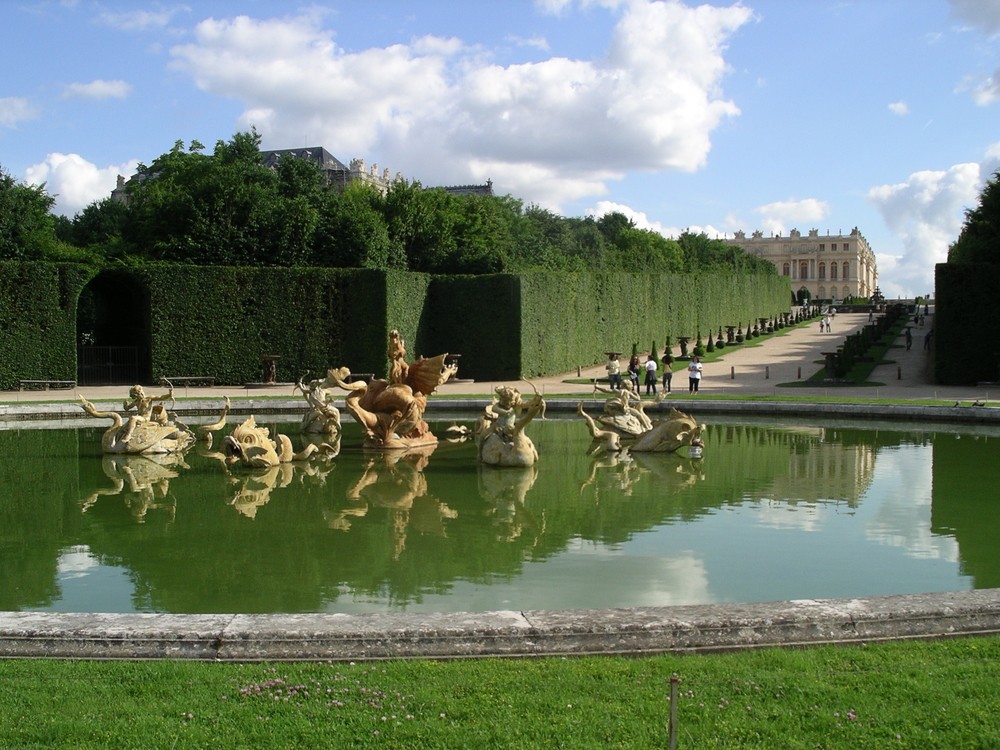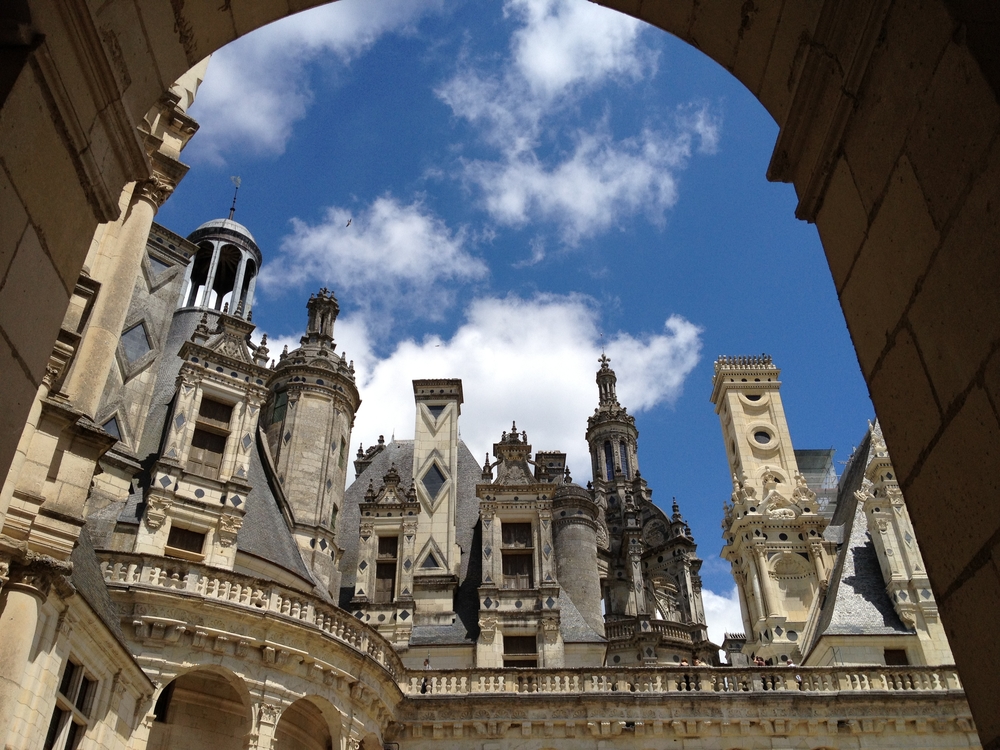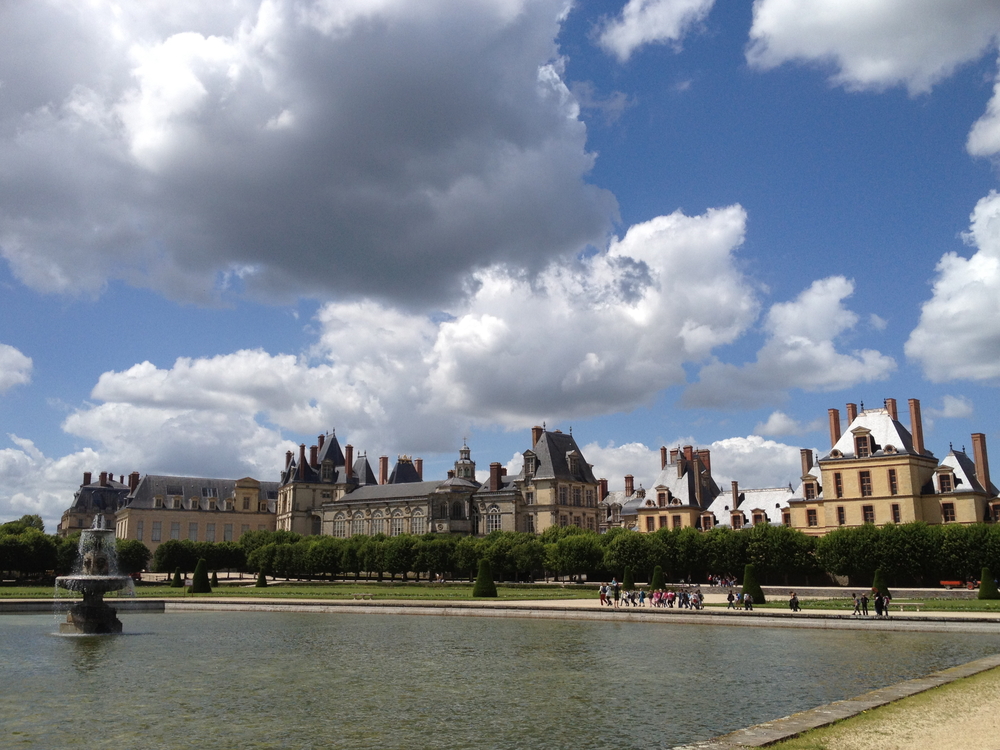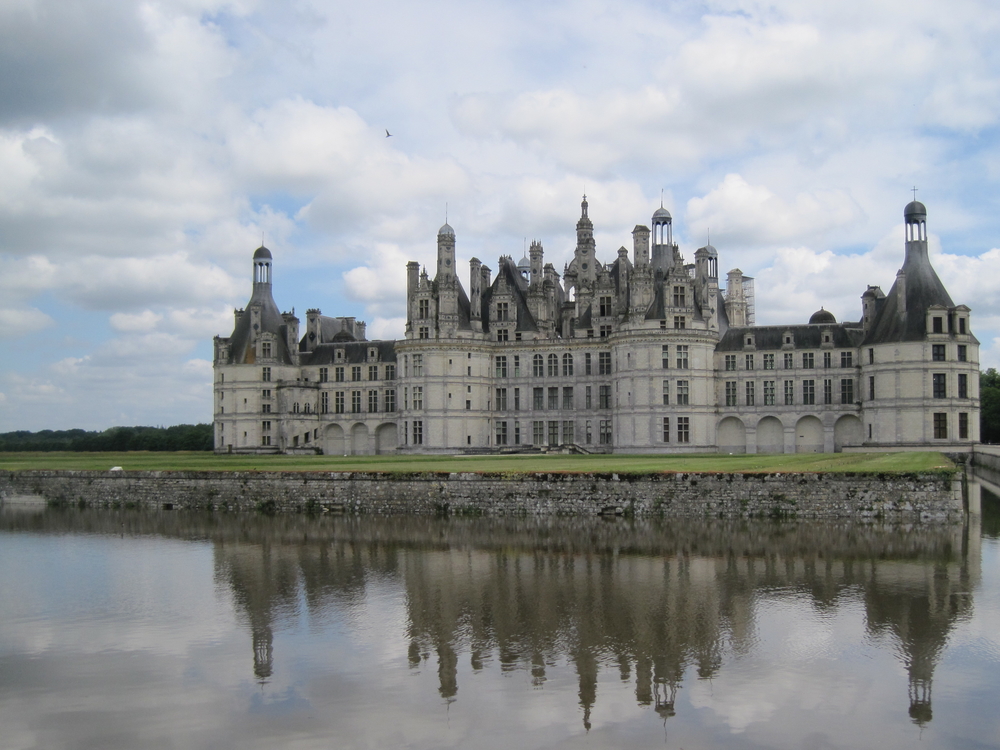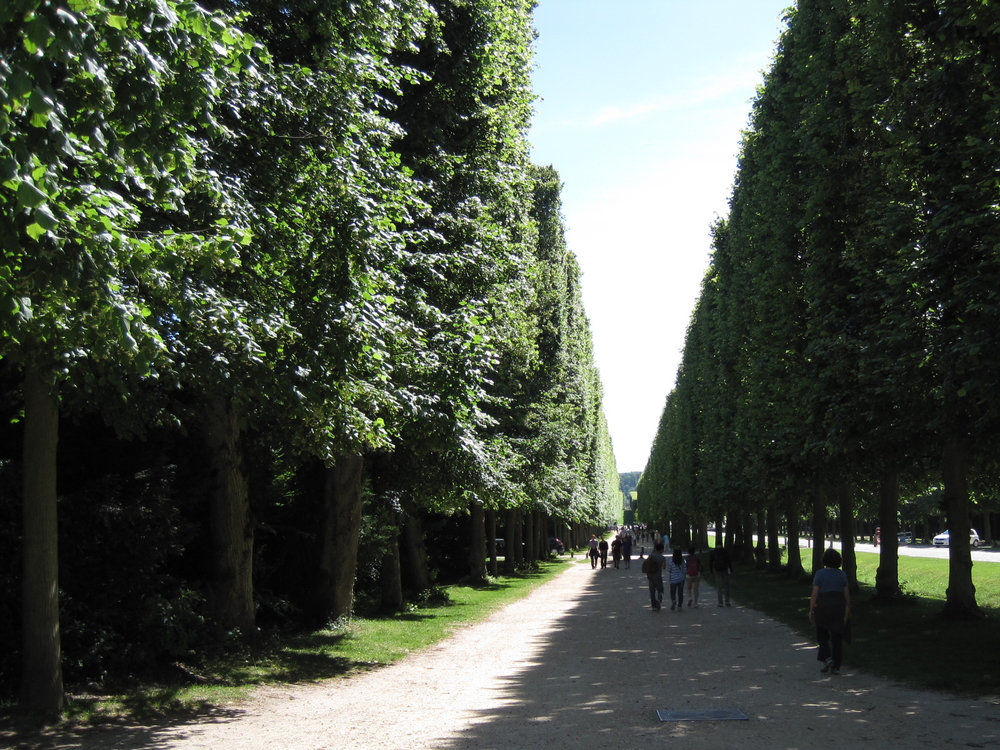Greetings, everyone! What a year it has been. Our Christmas postcards (mailed today) invite you to read more about our travels on this site, so that means I need to post something more exhaustive than the snippets I've been throwing out every few weeks. This has not been a good year for blogging. But traveling, yes: six countries, dozens of cities and hundreds of photos. Let me explain -- no, there is too much -- let me sum up:
Early in the spring, we spent a day in New Orleans before driving out to St. Francisville for a weekend of fun with our dear friends Rod and Julie, their endlessly entertaining children and their picturesque backdrop of a town:
Back home, we planted our annual garden that would later be the victim of our annual neglect. Hey, we were busy. My parents, on the other hand, were far more industrious and took locavorism one step further with the acquisition of eight hens. They started out teeny-tiny, like this,
And grew to healthy hen sizes by summer's end, when they were filling several cartons of eggs a week.
We enjoyed two snowstorms, both on feasts of the Theotokos. Here's Annunciation Day's haul, which gave us a nice long weekend in March.
One of the most rewarding things in our lives is our participation in the community of Holy Cross parish, where Rob helps with the gardens, I lead the chanters and we have many wonderful friends. I've also continued to perform with Boston Byzantine Choir this year, including a concert in Montreal in April, where we saw the stunning Notre Dame cathedral and an equally stunning variety pack of weather (rain, snow, hail, wind and sunshine in under 48 hours!)
A couple of weeks later, we celebrated the Resurrection in our own parish, far more humble but just as lovely to us. Here we are gathered outside the doors, where we sing the first joyful "Christ is Risen!" of the year.
Despite the fact that we both grew up in Baltimore, neither of us had ever been to Pimlico Racetrack until this spring, when we enjoyed watching and placing bets on several minor races. Rob was the big winner, pocketing $12.50.
And, a big fan of classic rock, he knows when every concert is happening, so we attend more than I'd like to admit. Here's the Rolling Stones show in Philadelphia, to which he took his father as a birthday present.
Our first big trip of the summer was to Colorado, where Rob had an architecture convention to attend. Afterwards, we spent some long-awaited time with our adopted family, the O'dells, who took us on a grand tour of their home state. Here we are in Estes Park, shivering in the sunshine:
We drove southwest through some incredible mountain passes, winding up in Durango, where we took a day trip to Mesa Verde National Park to see cliff dwellings that were over a thousand years old.
Then, on what became the highlight of our trip, we boarded an old-fashioned narrow-gauge train that took us over rivers, through woods and to the tiny mining town of Silverton. We had coal dust in our hair and wind burns on our faces, but it was the most fun I've had in a long time!
We were home for just a week when I had to dash off to the Sacred Music Institute at Antiochian Village, where I gave a few classes, including this talk about the experience of Orthodox Holy Week. Meanwhile, Rob was off to Paris, leading another study tour of chateaus and museums with a group of young architectural hopefuls.
This was a very different trip in a number of ways: I missed the first few days because of my conference, but met up in time to help the group navigate out of the city to half a dozen different chateaux of the Loire Valley. Unfortunately, I also picked up a nasty bug somewhere in our travels, but I rested when I could and still managed to have a good time in and out of the city. One highlight was the discovery of the Promenade Plantee, an abandoned rail line that's been repurposed as an elevated greenway.
And when we got home, I finally finished my Paris Top 10 series, so you can read lots more there about what we've seen and done on our various trips there. But we didn't stay home for long -- just a few days, in fact, before flying the opposite direction to visit my grandmother on the West Coast, along with my family. Though we have visited this part of the country many times, we enjoyed several new experiences, including the canals at Venice Beach (freakish bodybuilders not pictured:)
And we carefully staged this photo in the Joshua Tree park, which may be the peak of this year's accomplishments.
Once home, we took a vacation from our vacations for a couple of weeks. We celebrated ten years of marriage in late August, but an overnight trip downtown was the furthest we wanted to go for awhile. These house numbers were Rob's gift (look, you try finding an interesting present made from iron!)
In September our parish celebrated twenty years of worshipping, serving and witnessing together. It was a glorious weekend, during which we sang more than we had thought possible: here we are during Vigil, which lasted nearly three hours. You can also see some of the incredible iconography that's been finished over the last year, as well as the iconographer's son, the sweetest little altar-boy-in-training I've ever seen. Less than a month after this photo was taken, two of our chanters left to join monasteries, so it's a bittersweet memory. Glory to God for all of our time together and the music of our voices and hearts.
In everyday life, we both continue to enjoy the fruits of my labor at Yelp, an online ratings service where I am an Elite member and occasionally get perks like this one, a catered reception at the Museum of Science & Industry overlooking the Baltimore Harbor.
He took a well-deserved break this semester, earning a sabbatical to research and teach at Morgan State University, where they're looking to develop a mobile app for site analysis. He also spent plenty of time with his two furry daughters, as well as with his new business venture, Appitecture, where he posts frequently. They are launching an extensive website on New Year's Day, so stay tuned for more interesting photos in his upcoming "Places and Perspectives" blog.
Rob's more relaxed schedule this fall brought us yet more opportunities to travel, including a quick trip to New York, where I had a writing seminar to attend and he enjoyed photographing the beautiful fall colors.
We visited some friends in the city on the way home. They were wonderful hosts and we had a great time eating and catching up with them. As a bonus, their apartment is walking distance from the Cloisters, my favorite Manhattan museum. It's nestled in Fort Tryon Park where, it would seem, the spirit of Terrence Malick is lurking:
And just when it looked like the year was winding down, we took our most ambitious and exotic trip to date. For two weeks in November and December, we traveled with our best friends through Turkey, Georgia and Armenia on a pilgrimage to visit holy sites in a part of the world that has known Christianity from its earliest days.
Our time in Istanbul was basically a series of mini-catastrophes, but once we landed in Georgia, we felt truly welcomed and at home, thanks to the bend-over-backwards hospitality of our lovely friends David and Margo and their intrepid son Dietrich. For ten days they drove, fed, translated and guided us through some of the most incredible sights and stories we'd ever experienced. Having only returned a couple of weeks ago, I need more time to process everything before I can really write about it, but here are some snippets from the trip.
Much of Georgia's spiritual history is connected with Nino, a Cappadocian nun who evangelized the country in the fourth century. We visited several sites connected with her, including the monastery where she is buried. On the grounds there is a sacred spring that appeared, miraculously, when the nuns needed water (and then, just as miraculously, disappeared and reappeared in a hidden spot when the convent was under persecution by an invading army.)
It was nearly freezing the day we visited, but we went for a dip in the chilly water and prayed -- quickly! -- for a blessing before toweling off in the little stone house and putting all of our layers back on. When the boys were in the water, we heard Matt's voice through the tiny window: "Well, Rob, what do you think of this Orthodox thing now?"
Probably what we all thought, which was: the culture there is so steeped in faith, it is truly a marvel. It has endured centuries of persecution, first by the pagan Persians, then by the Muslims and most recently at the hands of the Communists. Its churches and monasteries have been burned, demolished, and demoted to hospitals and museums, but in the short period since its independence, the nation has already begun to transform itself.
As if that weren't enough of a trip, we also took a couple of days to drive south to Armenia, the land of my ancestors on my father's father's side. There we found another nation that has endured cruel and horrendous persecution, bordering on complete extermination, but that has emerged with a plucky and inspiring resolve to rebuild and transcend its own grief.
From high in the capital of Yerevan, you can see the outline of Mount Ararat, the national symbol of the country where Noah landed thousands of years ago. (Their patriarchate in Etchmiadzin contains a staggering number of relics, including wood from the ark -- given to a monk by a pitying angel after the poor man had tried and failed three times to climb the mountain in search of the holy site.) It's also a good spot for a photo, if you can get one without too much windblown hair:
On our way out of the city, we received the gift of an early-morning snowstorm, meaning that by the time we reached the monastery on the banks of Lake Sevan, the roads were clear but the landscape was still a series of pristine, white undulations. In the chapel they were celebrating Divine Liturgy, and outside the world was holding its own celebration: "All the earth is Thy promised bride awaiting her spotless husband!"
The entire trip felt like one enormous gasp, and in the weeks since returning home we have been slowly exhaling, hoping that the exhaustion will wear off but leave the spirituality behind. Please know that we did remember you, our family and friends, in prayer in those holy places, just as we do here in the quiet and comfort of our home.
Snuggled up with a cat. As we are happiest.
We miss you, we love you and we hope to see you very soon!
Rob and Emily






















